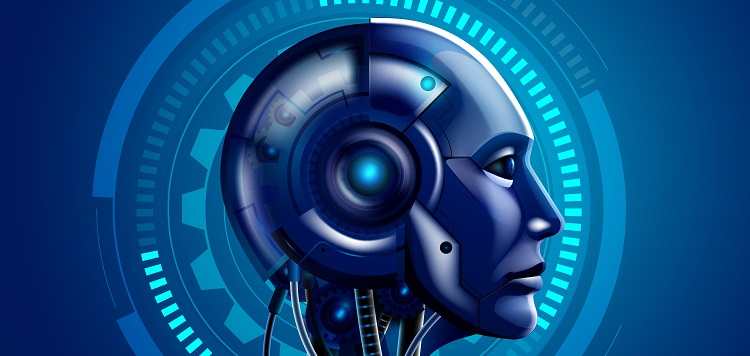Artificial Intelligence (AI) is a rapidly evolving technology that is revolutionizing many industries, including graphic design. In the past, graphic design was largely done manually by a designer. However, AI is now making it easier for graphic designers to create high-quality artwork by automating the creative process. AI-assisted design tools can generate new ideas, analyze visuals, and provide feedback to designers. This paper will explore the use of AI in graphic design, from Mailchimp’s Creative Assistant AI to Google’s LaMDA chatbot, as well as its potential to generate imaginative work and the controversy that ensued when an AI-crafted piece won at the Colorado State Fair.
1. Mailchimp’s Creative Assistant AI
Mailchimp’s Creative Assistant AI is one example of how AI can be used in graphic design. This tool helps designers create visuals for their projects by using machine learning algorithms to analyze visual data and generate new ideas for graphics. It also provides feedback on visuals created by the user and suggests ways to improve them. This tool is especially beneficial for designers who lack experience in graphic design or are short on time.
Benefits of AI in Graphic Design
AI-assisted design tools offer many advantages for graphic designers. For starters, these tools can save time and effort by automating certain tasks and providing feedback on visuals. They can also generate new ideas and suggest ways to improve existing designs. In addition, these tools can help designers create visuals that are more visually appealing and engaging for viewers. Finally, they can help designers stay up-to-date on the latest trends and techniques in graphic design.
2. Google’s LaMDA Chatbot
Google’s LaMDA chatbot is another example of how AI can be used in graphic design. This chatbot was designed to be so convincing that it tricked one of its engineers into believing it had achieved consciousness. It was designed to provide feedback to users on their designs and suggest ways to improve them. It was also designed to be able to interact with people in a natural and human-like manner, making it appear more personable than other automated tools.
How AI Can Seem Human-Like
AI-assisted design tools are able to appear human-like by using natural language processing (NLP) and machine learning algorithms to understand user input and generate appropriate responses. They are also able to provide feedback on visuals and suggest ways to improve them, just as a human designer would do. This makes them seem more personable and allows them to interact with users in a more natural way.
3. Could Robots Generate Imaginative Work?
The possibility of robots generating imaginative work has been a source of debate among experts in the field of AI. While some claim that robots may never achieve this level of creativity, others argue that they could eventually achieve this level of creative expression with the right programming and data sets. If robots were able to generate imaginative work, it could open up new possibilities for graphic design and other creative endeavors.
The Possibility of AI-Created Art
If robots were able to generate imaginative work, it could open up a whole new realm of possibilities for AI-created art. In theory, an AI-powered program could be used to create visually stunning artwork that could rival that of a human artist. It could also allow for faster creation of artwork, as well as provide more accurate feedback on visuals created by users. However, this has stirred up some controversy due to its lack of human creativity, as demonstrated by the controversy surrounding an AI-crafted piece winning at the Colorado State Fair in 2019.
4. Controversy Surrounding AI-Crafted Art
The idea of robots creating artwork has stirred up some controversy in recent years. This was especially true when an AI-crafted piece won at the Colorado State Fair in 2019. The piece was created using an algorithm that was programmed to create abstract art using images of plants as its source material. While some praised the piece for its creativity, others argued that it was not truly “art” because it was not created by a human artist. These debates sparked further discussion about the ethical implications of using AI in graphic design and other creative endeavors, as well as its potential to replace human creativity with artificial intelligence.
Conclusion
In conclusion, AI is a rapidly evolving technology that is revolutionizing many industries, including graphic design. From Mailchimp’s Creative Assistant AI to Google’s LaMDA chatbot, there are numerous examples of how AI can be used in graphic design. It has the potential to save time and effort for designers by automating certain tasks and providing feedback on visuals. Additionally, it has the potential to generate imaginative work and open up new possibilities for AI-created art. However, this has stirred up some controversy due to its lack of human creativity, as demonstrated by the controversy surrounding an AI-crafted piece winning at the Colorado State Fair in 2019. All in all, while there are still some ethical considerations to be made when using AI in graphic design, it is clear that it can be a valuable asset for designers looking to create high-quality visuals quickly and easily while also staying abreast of the latest trends and techniques in the industry.

